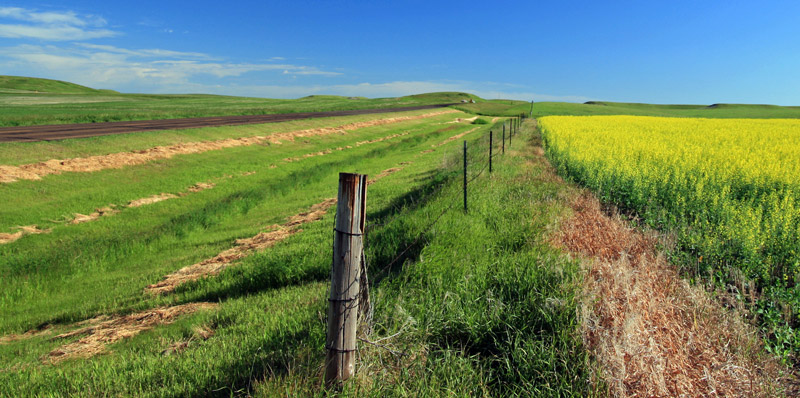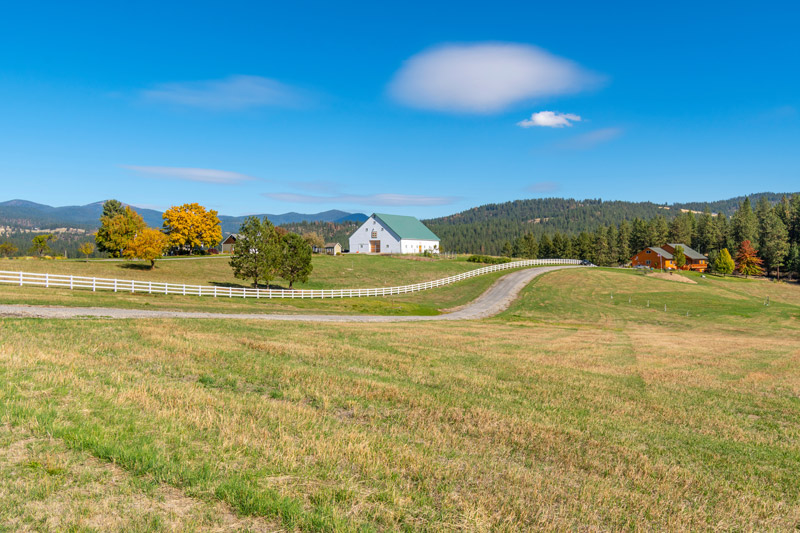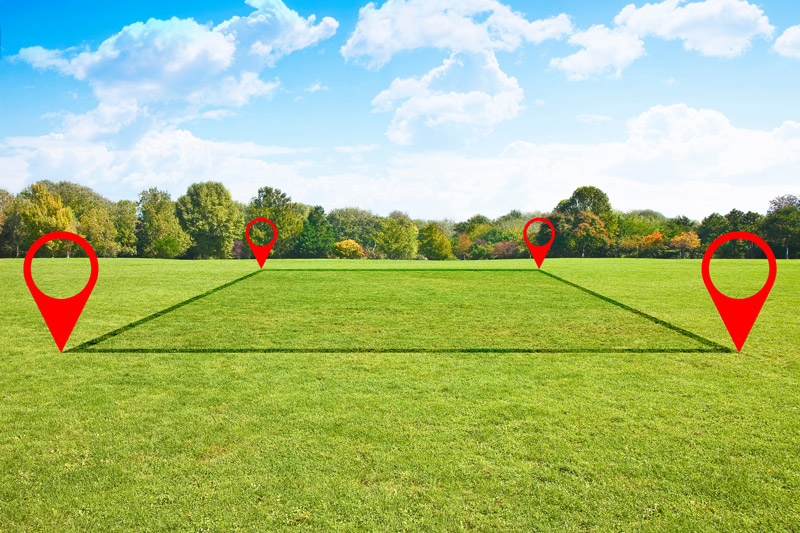If investors are interested in sectors like land development, farmland, or agriculture, they’ll inevitably run across “acres” on their quest for the perfect property. It’s also common for these same investors to admit they can’t form a mental image of different parcels using this metric. Although terms like “acres” and “acreage” are ubiquitous in real estate, it’s not as common for people outside of agriculture to have direct experience using this measurement in their daily lives.
Thankfully, it’s easy to explain what an acre is, even for investors fresh into the agricultural sphere. Anyone thinking about investing in farmland must take the time to thoroughly understand this metric and the best practices used when measuring a land’s acreage.
What is an Acre? A Simple Visualization of One Acre

An acre is a unit of measure most commonly used in the USA, Canada, and the UK to measure parcels of land in rural and agricultural settings. The precise measurement used per acre in the USA and UK is 43,560 square feet, equating to 660 feet long by 66 feet wide. For context, an NFL field is 57,600 square feet, so one acre is slightly smaller than these popular pro sporting arenas.
Global Variations on Acre Measurements
Although the most recognized standard for one acre is 43,560 square feet, there are a few nuances investors might run across as they dig deeper into this metric. For instance, Ireland’s traditional measurement per acre is approximately 6,777 square feet, significantly smaller than the contemporary value used in North America and the UK. Some Scottish farmers use an even smaller acre measurement of 5,359 square feet to approximate the size of their property.
As an aside, “hectares” are a separate metric not to be confused with “acres.” If investors see land parcels measured in hectares, the conversion calculation is simply multiplying hectares by 2.47.
Despite these different acre standards, most American, Canadian, and UK farms subscribe to the 43,560 square feet standard. If there are any questions, however, investors can double-check the square footage when assessing different acreage measurements.
Understanding Acreage Through Everyday Comparisons
Grasping the size of an acre can be challenging without a point of reference. To bridge this gap, let’s explore some creative comparisons that bring the concept of an acre into perspective using familiar sights and spaces.
Imagine standing at the edge of a football field. An acre is roughly 90% of this size, a tangible comparison that helps many visualize the expanse of land they’re considering. For sports enthusiasts, envisioning 16 tennis courts or nine basketball courts clustered together can also paint a vivid picture of an acre’s vastness.
The Importance of Measuring Acres for Farmland

Since acres are the most common way land brokers and real estate agents express the size of rural land, anyone interested in purchasing these parcels needs a good mental image of how much physical space an acre takes up. The better an investor appreciates the size of an acre, the easier it is for them to visualize a property and determine what kind of cultivation is possible in a chosen area.
Understanding acreage also ensures fair pricing and legal clarity throughout the land-buying process. Plus, government regulations often require accurate acreage measurements for zoning, taxation, and environmental compliance.
The Basics of Measuring Acres
Long gone are the days of measuring acres with ropes and chains. Although professional surveyors still inspect farmland physically, they use specialized technological tools such as GPS devices, drones, and digital mapping tools to get exact measurements without as much laborious effort.
While professional surveyors offer the most accurate measurements using advanced tools, there are several DIY steps you can take to get a rough estimate of your land’s size. These methods range from manual measurements to utilizing existing property documents, providing a solid starting point for understanding your land’s expanse.
- Manual Measurement: Armed with a measuring tape or a measuring wheel, you can walk the perimeter of your property, noting the lengths and widths. This method, though time-consuming, offers a hands-on approach to grasping your land’s dimensions.
- Consulting Property Deeds: Often, property deeds contain detailed descriptions and measurements of your land. These documents can serve as a reliable source for understanding your property’s boundaries and size.
- Using Plat Maps: Plat maps, available upon property purchase or inheritance, illustrate lot layouts and dimensions.
- Pacing: For a quick and rough estimate, pacing the length and width of your property and then calculating the area can offer a ballpark figure. However, this method is the least accurate and should be used for approximation only.
For the most accurate results, it’s best practice to partner with an accredited surveyor with access to the latest advances in aerial surveying and other geo-mapping technologies. Ask what tools surveyors used to get their results to ensure the legitimacy of their findings when considering different land parcels.
Standard Acreage Ranges on Traditional Farms
There’s significant diversity in the size of farms in nations like the USA and Canada, and each landowner has a different idea of the “best acreage” considering their investment goals. However, data from the United States Department of Agriculture (USDA) suggests the average farm in the USA is about 445 acres.
Just bear in mind this is a general estimate and will differ depending on the type of farm investors are studying. For instance, small family-owned farms typically fall on the lower end of the spectrum, while industrial farms often span thousands of acres.
Key Considerations for Measuring Acreage on a Farm

Once investors know the standard measurement per acre, it may seem like a no-brainer how to determine the size of an available zone. While measuring a land plot is standard practice for surveyors, there are a few distinctive factors to consider that impact the final number.
Failing to account for any of these features could lead to an inaccurate reading, so it’s imperative for land buyers, brokers, and surveyors to pay careful attention when analyzing their land.
- Identifying boundary dimensions: First, everyone must be on the same page about how far an available land’s length and width stretch, especially if neighbors are in the vicinity. Mark the boundaries of the property using landmarks, fences, or natural features to clearly define the area that’s going to be measured — no more, no less.
- Topography: While some farmland might be flat and convenient to work with, there are often unique local variations that impact the final acreage reading. A professional acreage measurement must account for a land’s terrain, including hills, valleys, and ponds, all of which impact the total acres.
- Overlapping land lot: If farmland consists of multiple land parcels, surveyors must be extra diligent when identifying and accounting for overlap or gaps between these areas. Failing to zone out these areas carefully can lead to measurement discrepancies and potentially encroach on another property owner’s land.
- Precision survey tools: Although some surveyors still cling to “old-fashioned” measurement methods, more professionals prioritize hi-tech tools like GPS devices and drones. The more advanced tools surveyors use, the better odds they’ll figure out the most precise acreage estimation for farmland, especially on large or irregularly shaped plots.
- Legal considerations: Lastly, prospective landowners should familiarize themselves with local zoning regulations and surveying standards to ensure they’re well within their county’s laws. Reviewing the legal code for surveying ensures proper documentation and high compliance standards with local authorities, preventing lengthy and costly legal challenges down the line.
Carefully Assess Acreage When Searching for Farmland
Defining an acre is simple, but this metric’s implications for farming and land management are vast. From getting a proper appraisal on miles of farmland to making informed decisions about a parcel’s use and value, understanding acres is fundamental to agriculture and rural development. With a firm grasp on just how expansive an acre is — as well as the most common factors influencing this measurement — investors are in a better position to figure out the best parcels for their preferences.


